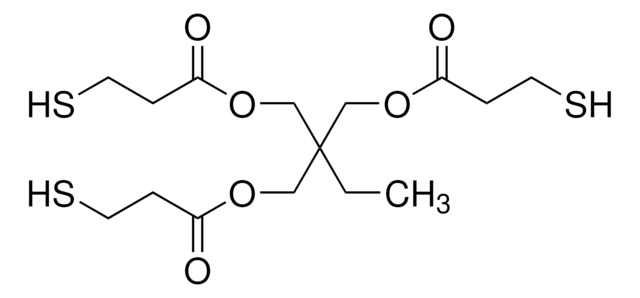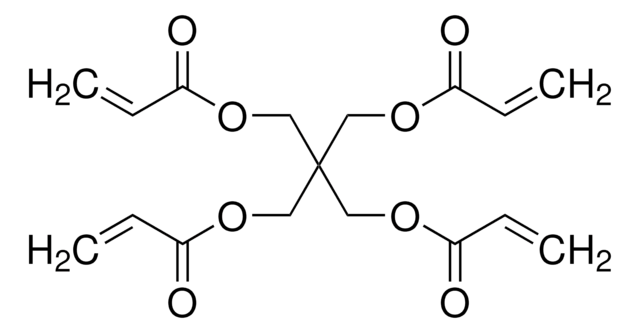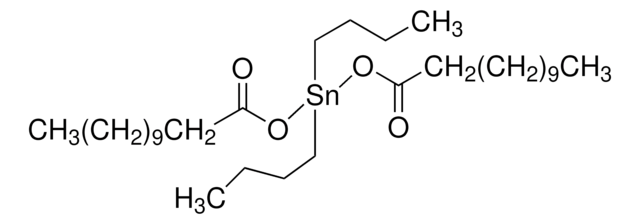381462
Pentaerythritol tetrakis(3-mercaptopropionate)
>95%
Synonyme(s) :
Pentaerythritol (3-mercaptopropionate), Pentaerythritol terakis(3-mercaptopropionate), Pentaerythritol tetra(3-mercaptopropionate)
About This Item
Produits recommandés
Niveau de qualité
Pureté
>95%
Indice de réfraction
n20/D 1.531 (lit.)
Point d'ébullition
275 °C/1 mmHg (lit.)
Densité
1.28 g/mL at 25 °C (lit.)
Chaîne SMILES
SCCC(=O)OCC(COC(=O)CCS)(COC(=O)CCS)COC(=O)CCS
InChI
1S/C17H28O8S4/c18-13(1-5-26)22-9-17(10-23-14(19)2-6-27,11-24-15(20)3-7-28)12-25-16(21)4-8-29/h26-29H,1-12H2
Clé InChI
JOBBTVPTPXRUBP-UHFFFAOYSA-N
Vous recherchez des produits similaires ? Visite Guide de comparaison des produits
Application
- Polymeric degradable networks through thiol-ene click reactions with tri/tetra-acrylates.
- Thiol-ene-methacrylate composites, which are applicable as dental restorative materials.
- Network solid polymer electrolytes based on polydimethylsiloxane, for lithium-ion batteries.
Mention d'avertissement
Warning
Mentions de danger
Conseils de prudence
Classification des risques
Acute Tox. 4 Oral - Aquatic Acute 1 - Aquatic Chronic 1 - Skin Sens. 1
Code de la classe de stockage
10 - Combustible liquids
Classe de danger pour l'eau (WGK)
WGK 3
Point d'éclair (°F)
Not applicable
Point d'éclair (°C)
Not applicable
Équipement de protection individuelle
Eyeshields, Gloves, type ABEK (EN14387) respirator filter
Faites votre choix parmi les versions les plus récentes :
Déjà en possession de ce produit ?
Retrouvez la documentation relative aux produits que vous avez récemment achetés dans la Bibliothèque de documents.
Les clients ont également consulté
Articles
The Progress in Development of Dental Restorative Materials
Notre équipe de scientifiques dispose d'une expérience dans tous les secteurs de la recherche, notamment en sciences de la vie, science des matériaux, synthèse chimique, chromatographie, analyse et dans de nombreux autres domaines..
Contacter notre Service technique
















